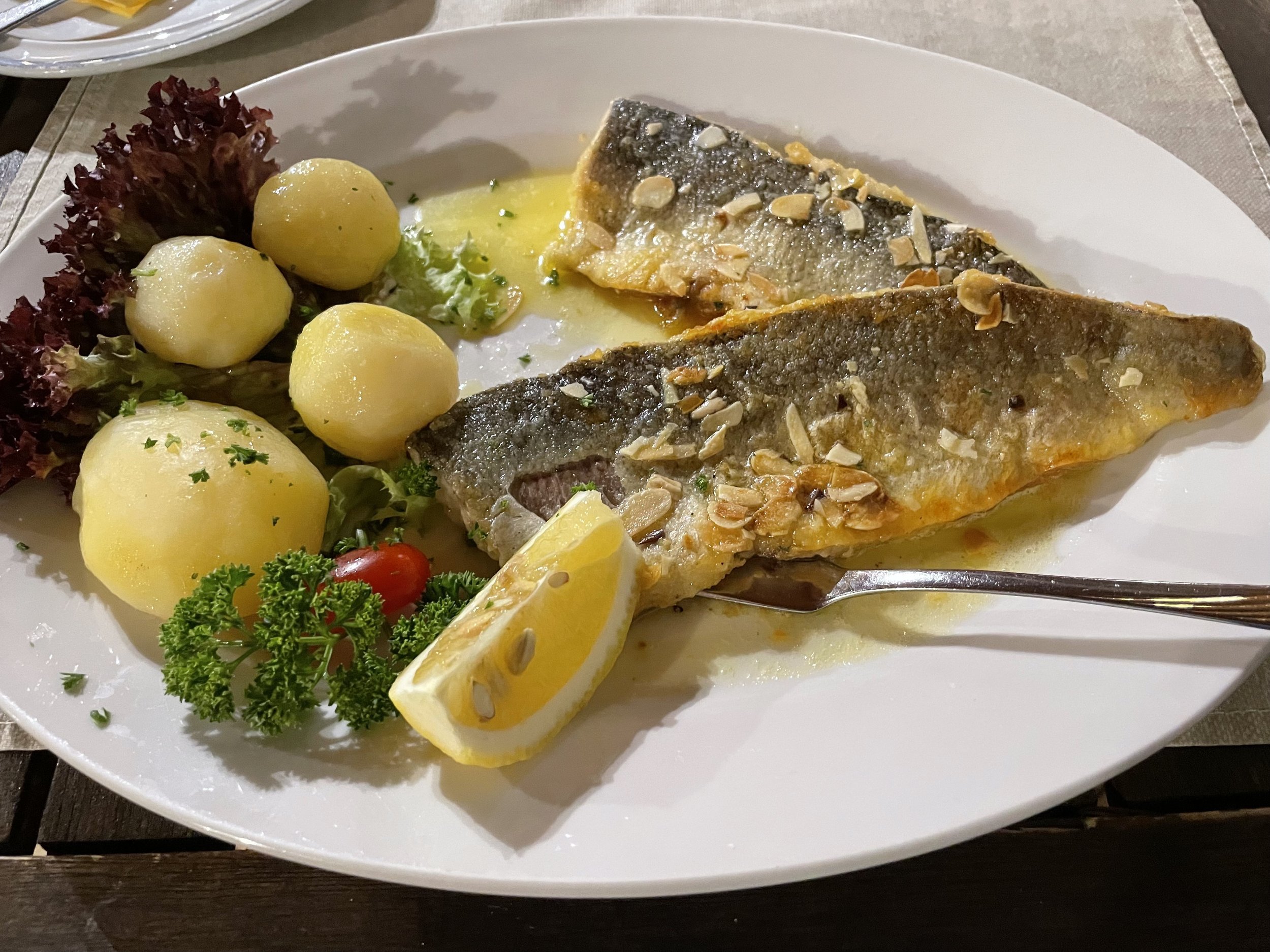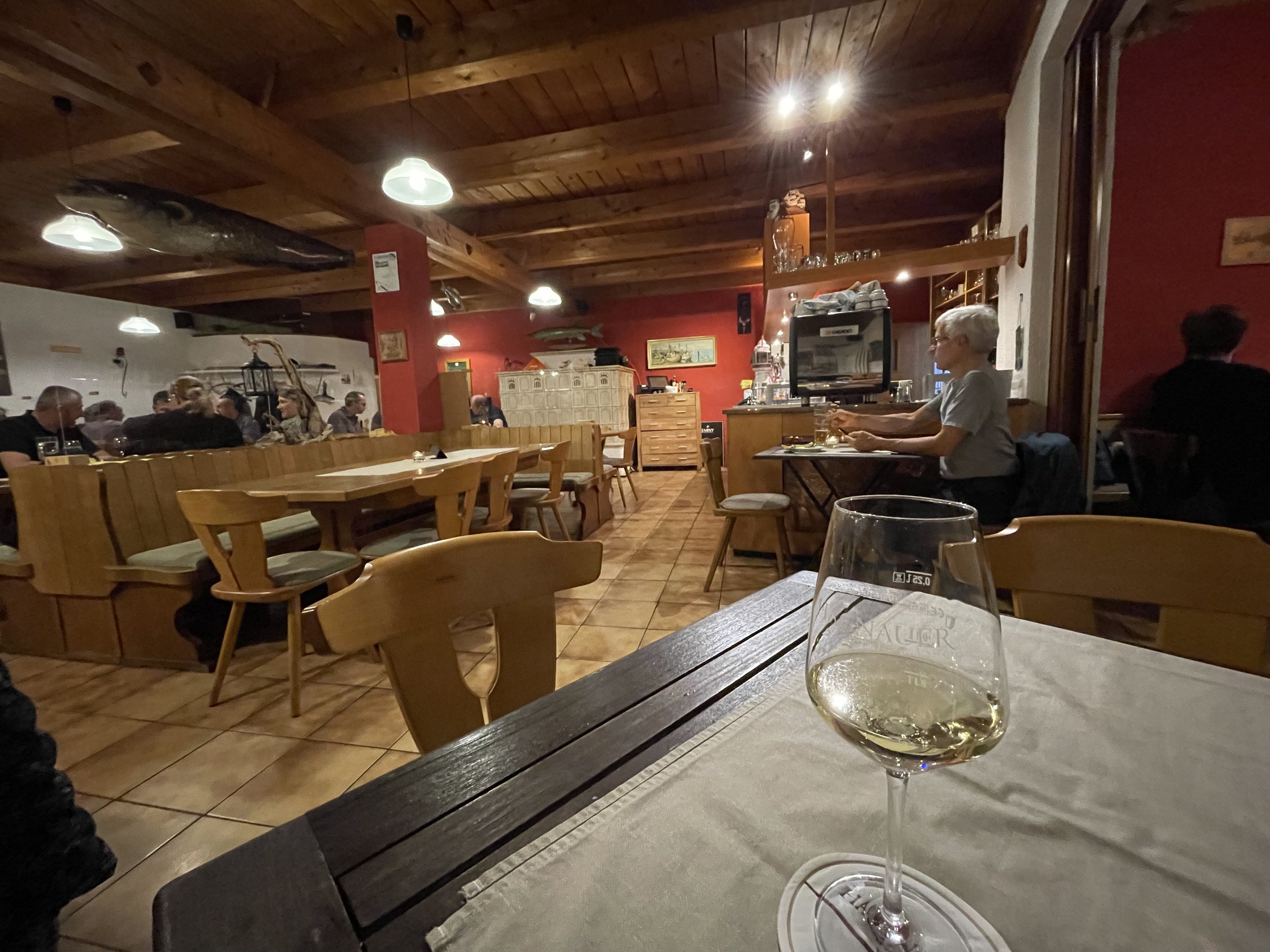Schwarzwildgoulash
The German Dämmerwald, a forested area within the nature park Hohe Mark, is not far from my father’s house. The Dämmerwald, Twilight Forest in English, is about 128 hectares and is home to roe deer, red deer and wild boar. Wild boar is named Schwarzwild in German. This is a nice segue to the ancient Northern European practice to sacrifice a boar as part of the celebration of the winter festival around the winter solstice. Its exact origins are sketchy but we have the poem Helgakviða Hjörvarðssonar from the Poetic Edda, written in the 13th century, as an early reference.
“Hethin was at home with his father, King Hjorvarth, in Norway. Hethin was coming home alone from the forest one Yule-eve, and found a troll-woman; she rode on a wolf, and had snakes in place of a bridle. She asked Hethin for his company. “Nay,” said he. She said, “Thou shalt pay for this at the king’s toast.” That evening the great vows were taken; the sacred boar (sónargöltr) was brought in, the men laid their hands thereon, and took their vows at the king’s toast.”
Wild boar goulash
It was heavily raining and very windy on Christmas Eve, so I had to put up my tarp. The wood fire was not exactly a Yule log, but close enough.
This is how I made my goulash. Ratio onion to meat was about one to one in weight. First I mixed the meat with flower, salt, black pepper and paprika powder. I fried the onion, sliced in rings, about halfway done. I took out the onion and added fresh oil into the pot. I fried the meat until brown. ThenI added the onion back into the pot and whisked in a small can of tomato paste. Simmer for about 20 minutes.
Then I added a can of tomato passata, game fond and plenty of caraway. Lastly you need to add fresh paprika (bell pepper) cut into small pieces. Simmer for another hour until the meat is tender.
Additions I did not have on hand: a glass of red wine, thyme, garlic, bayleaf, mushrooms (Pfifferling) and smoked bacon. The day before my mental battery was so empty I couldn’t get myself together to compare more recipes. I squeezed out just enough energy to eat two fresh flat oysters at the Noordermarkt in Amsterdam.
“Wildfleisch direkt und frisch vom Jäger. Privatverkauf von Wild aus der Region!”
You can buy the meat locally. Markus Bauhaus sells roe deer (Rehwild), red deer (Rothirsch) and wild boar (Schwarzwild), from local forests.
Address: Stoppacker 14, 46414 Rhede, +49 151 175 10 860, bauhaus-67@web.de.
On the map below the free roaming red deer district of Dämmerwald-Herrlichkeit Lembeck. The total population in the Lower Rhine region amounts to about 500 animals.
Dämmerwald-Herrlichkeit Lembeck.



















